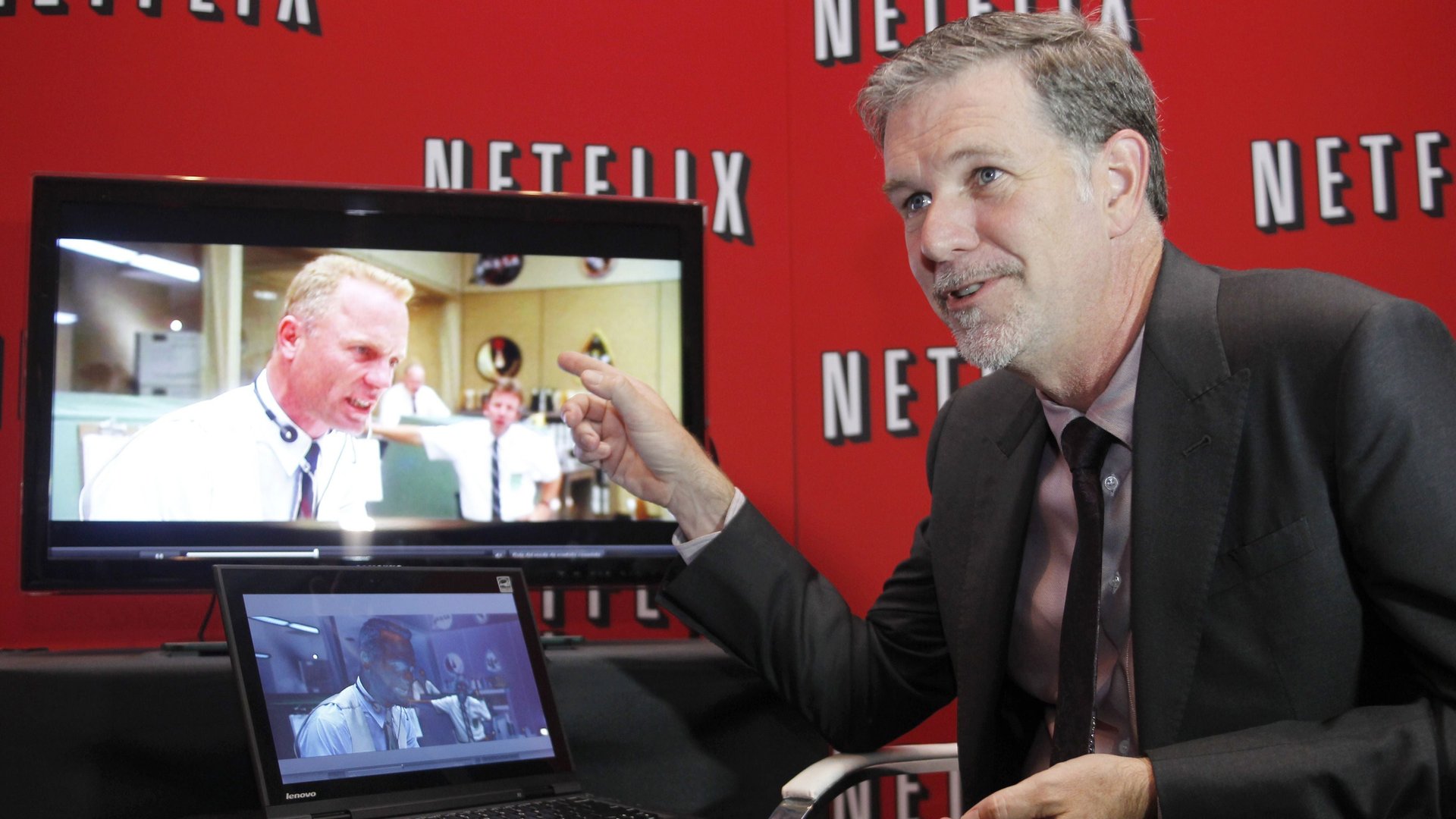The best ideas for improving Netflix’s UI were all invented by Netflix
Twice a year, the Netflix product-development staff take part in the company’s Hack Day, during which they engineer and design “hacks” that a subscriber could, hypothetically, use to enhance the Netflix experience. According to Netflix, it’s “a way for our product-development staff to get away from everyday work, to have fun, experiment, collaborate, and be creative.”


Twice a year, the Netflix product-development staff take part in the company’s Hack Day, during which they engineer and design “hacks” that a subscriber could, hypothetically, use to enhance the Netflix experience. According to Netflix, it’s “a way for our product-development staff to get away from everyday work, to have fun, experiment, collaborate, and be creative.”
Many of these creations are silly and pointless. Here are a few examples:
- “Net the Netflix Cheats” (video) requires “dual PIN access to watch titles that you and your partner have agreed to watch together,”—so you can’t “cheat” on your significant other with Netflix (useful for couples that likely have other issues they need to work out).
- “Netflix VHF” (video) modifies a 1950s-era television set so that it can run Netflix (extremely cool, but useful only to time travelers).
- “Netflix Hue” (video) uses smart lightbulbs to make your room’s ambient light match whatever’s on screen (also cool, but not recommended for people with epilepsy).
But others seem like they could be genuinely great additions to the Netflix user interface. For instance, this is “Ok Netflix”:
Simply speak any line from a TV show or movie (provided it’s in the Netflix library, of course) into the “Ok Netflix” companion app, and it will automatically play the scene with that dialogue.
Here’s another, called “Smart Channels”:
“Smart Channels” is a list of curated channels within the Netflix app. It’s fairly similar to the experience of channel surfing on traditional TV, only you’re much more likely to actually want to watch whatever is in your queue.
Over the last couple of years, Netflix staff have developed several other useful hacks for the company’s Hack Day, like a Chrome extension that allows you to multitask while watching Netflix (video), or an alternate interface that creates network graphs based on your titles (video).
Netflix’s UI doesn’t need an overhaul. It’s quick, smooth, and generally easy to use (though tell that to subscribers clamoring for better searching and filtering abilities). But it’s also bare-bones, and there’s a lot of untapped potential there. Netflix could benefit from more things.
There’s already a number of browser extensions that can enhance your Netflix experience, but none of them are made or endorsed by the company. They’re often spotty and unreliable and, often, just not very good. The hacks that Netflix staff have created for a fun company day of levity put these amateur add-ons to shame.
So why not actually implement them into the service? Quartz has reached out to Netflix for an answer (we’ll update this story if the company replies), but we have a few ideas. It’s possible that some of these hacks are simply not worth the financial and manpower investments that they’d require to fine-tune and then roll out on a massive scale.
It’s also possible (and quite likely) that Netflix likes its bare-bones UI, and doesn’t want to complicate it with things it doesn’t think subscribers will use regularly. As Netflix pushes into nearly every country on Earth, the content is what will reel in new subscribers—not the interface.
Still, there are a lot of loyal Netflix users (this reporter included) who want new features to play around with. With the competition intensifying, perhaps it’s time Netflix made some real hacks.